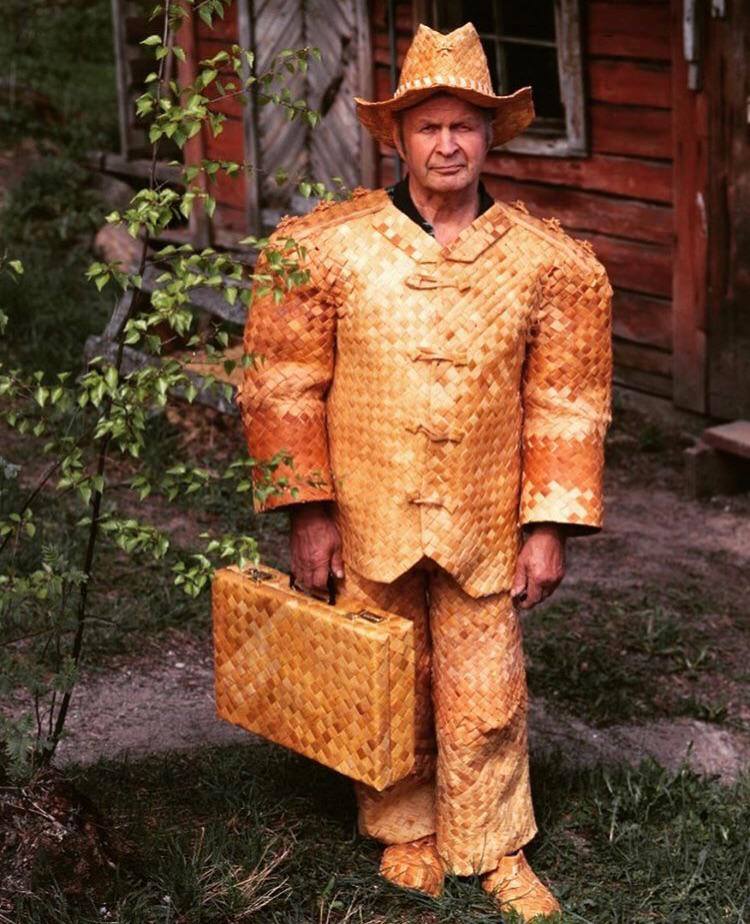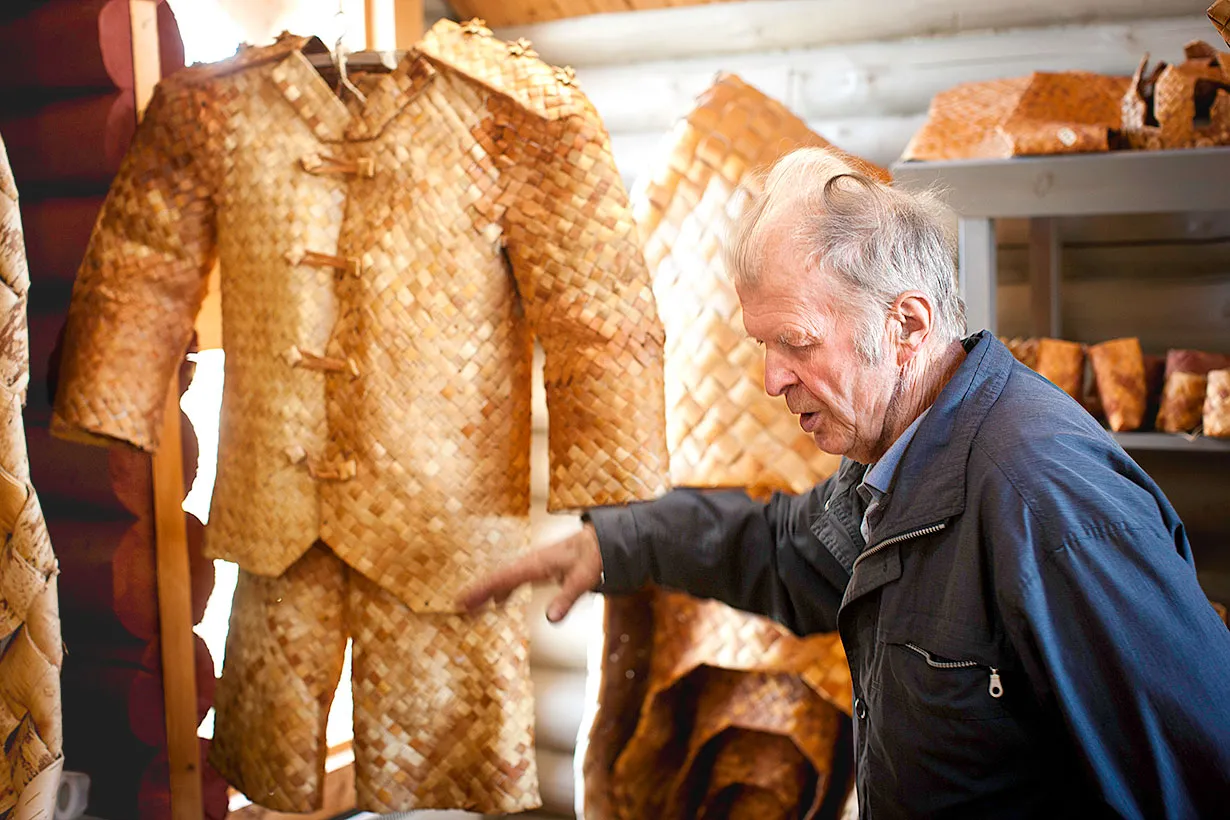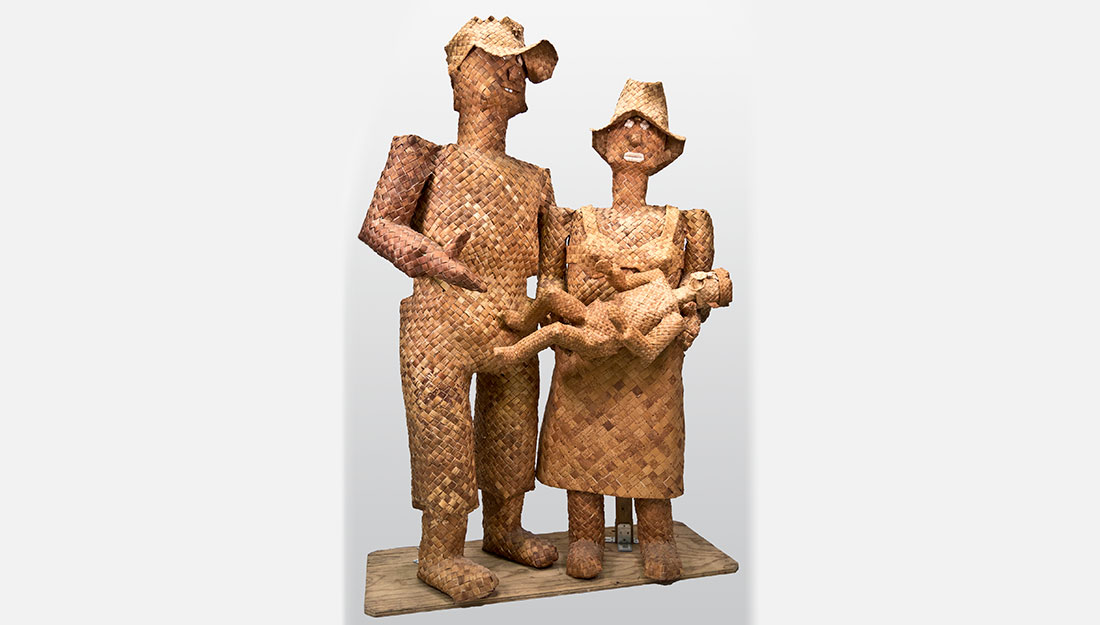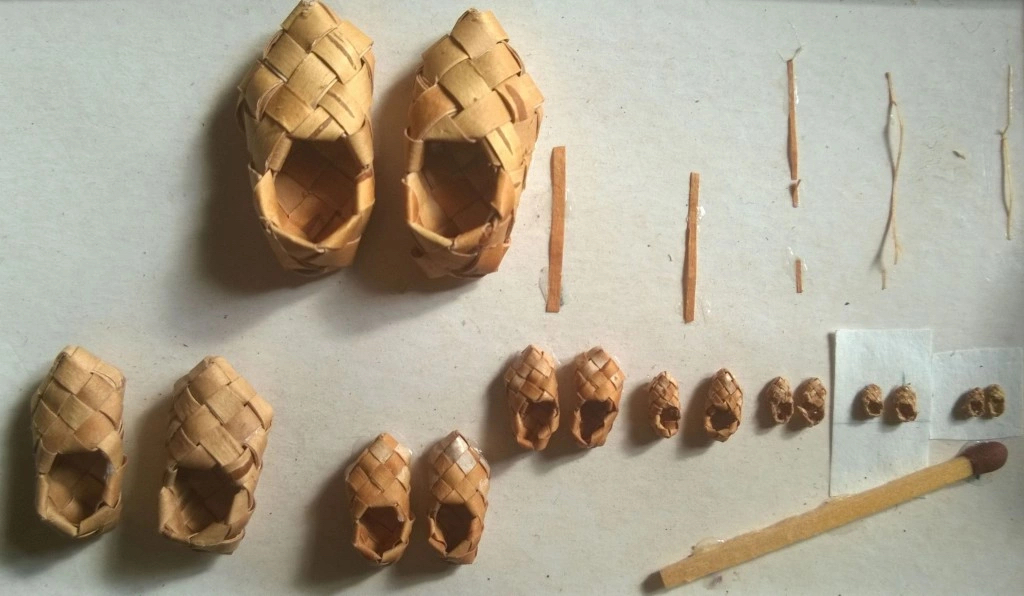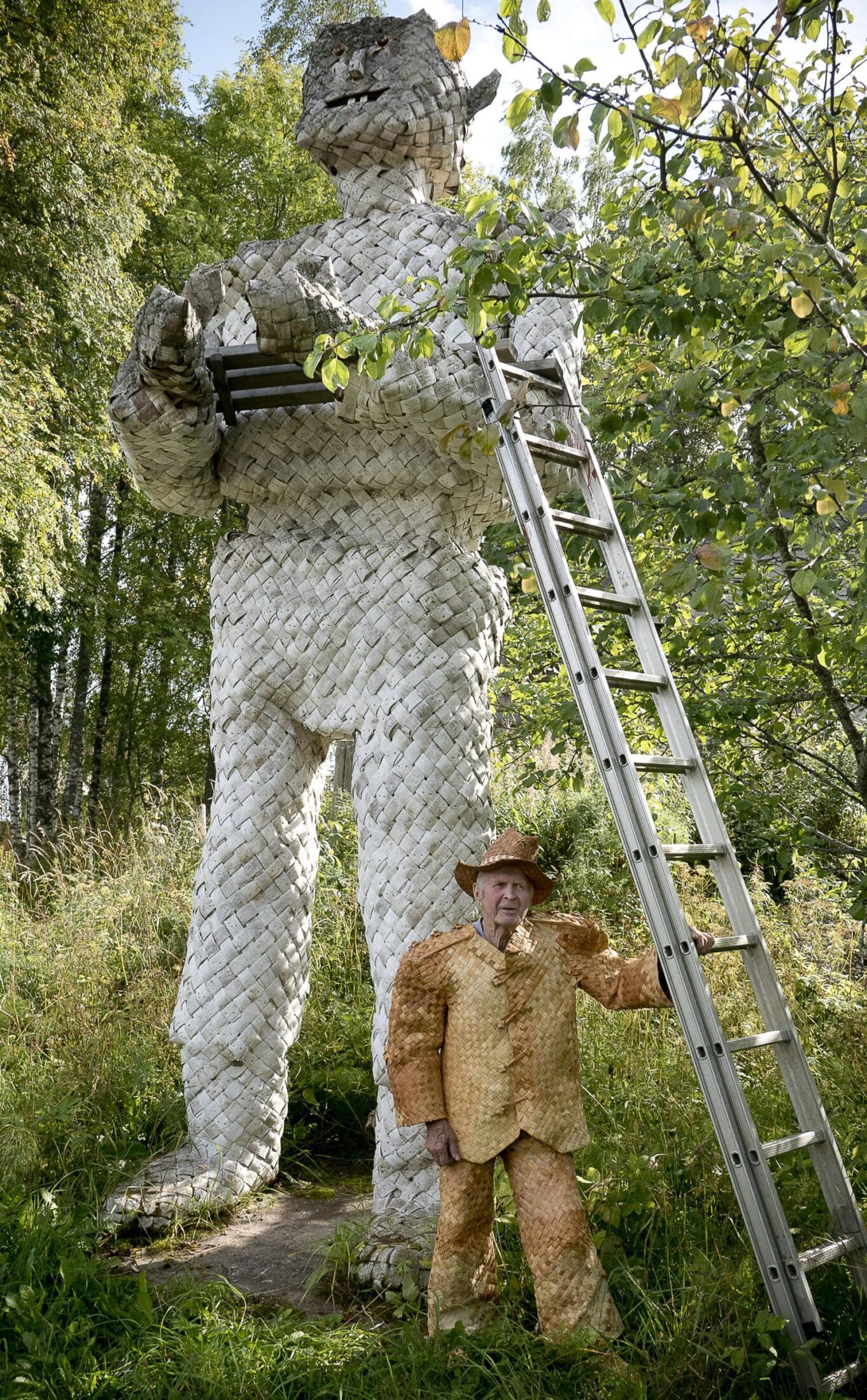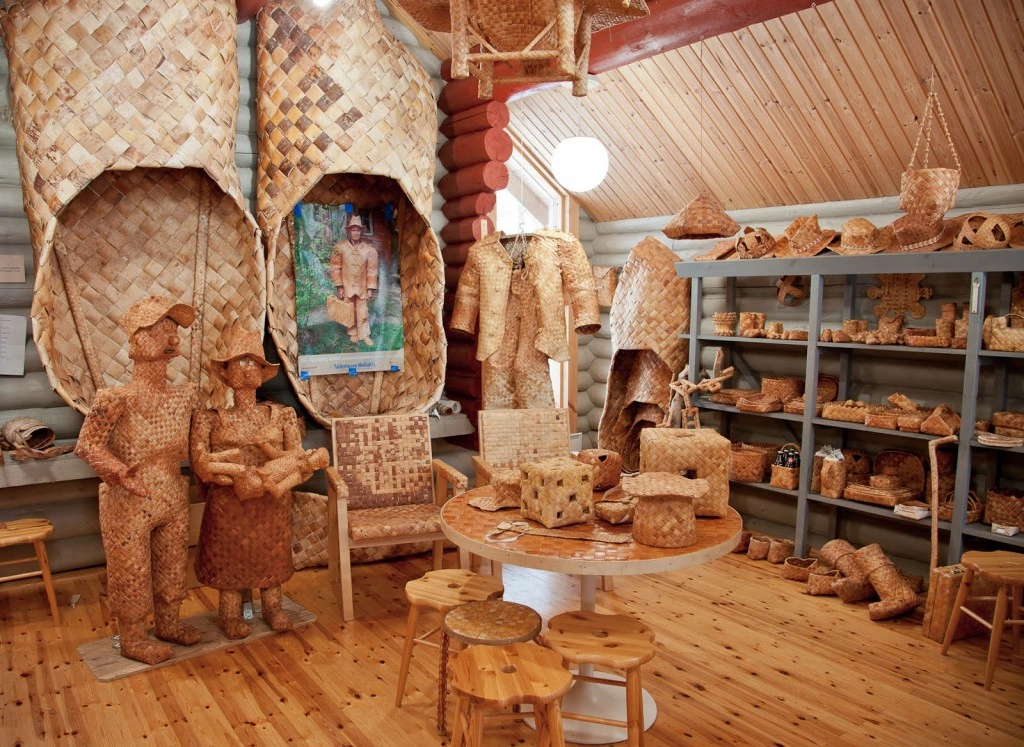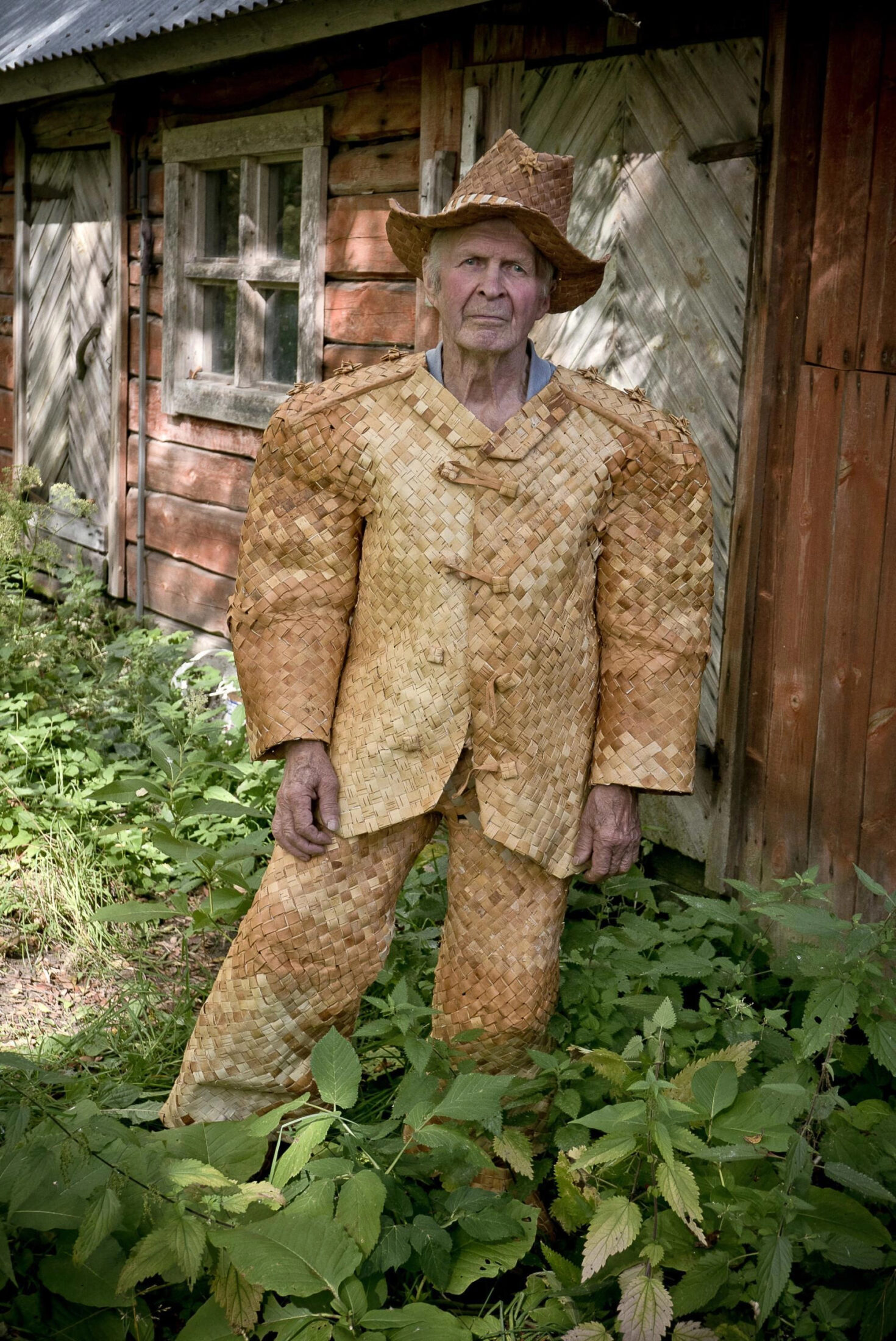Erki Pekkarinen: the birch bark magician
“You could say that I’ve been fiddling with birch bark for 77 years.”

From the largest birch bark shoes in the world (2,7 meters) to the smallest (3,8 millimeters), and from a Covid 19-virus with spikes in every direction to his famous all-bark forest-folk national costume: Erkki Pekkarinen (°1936) has experimentally made almost everything out of bark. “I started practicing at the age of ten”, he told The Jordan Times. “You could say that I’ve been fiddling with birch bark for 77 years.”
While the young Erkki was working as a lumberjack, he not only liked to craft things, but also understood the potential of bark. While birds were gnawing through colleagues’ cotton backpacks to steal their lunch, his food remained safe in his sturdy bark rucksack.
The origins of weaving birch bark into everyday items dates to the Stone Age. With its water-resistant and insulating properties, the early inhabitants of the Arctic region traversed snowy forests with bark shoes and bark packs. Also, boxes to store berries or small toys for children were made from bark. The value of the material left even a mark on Finnish language: the expression ‘to collect bark’ still means ‘to make money’.
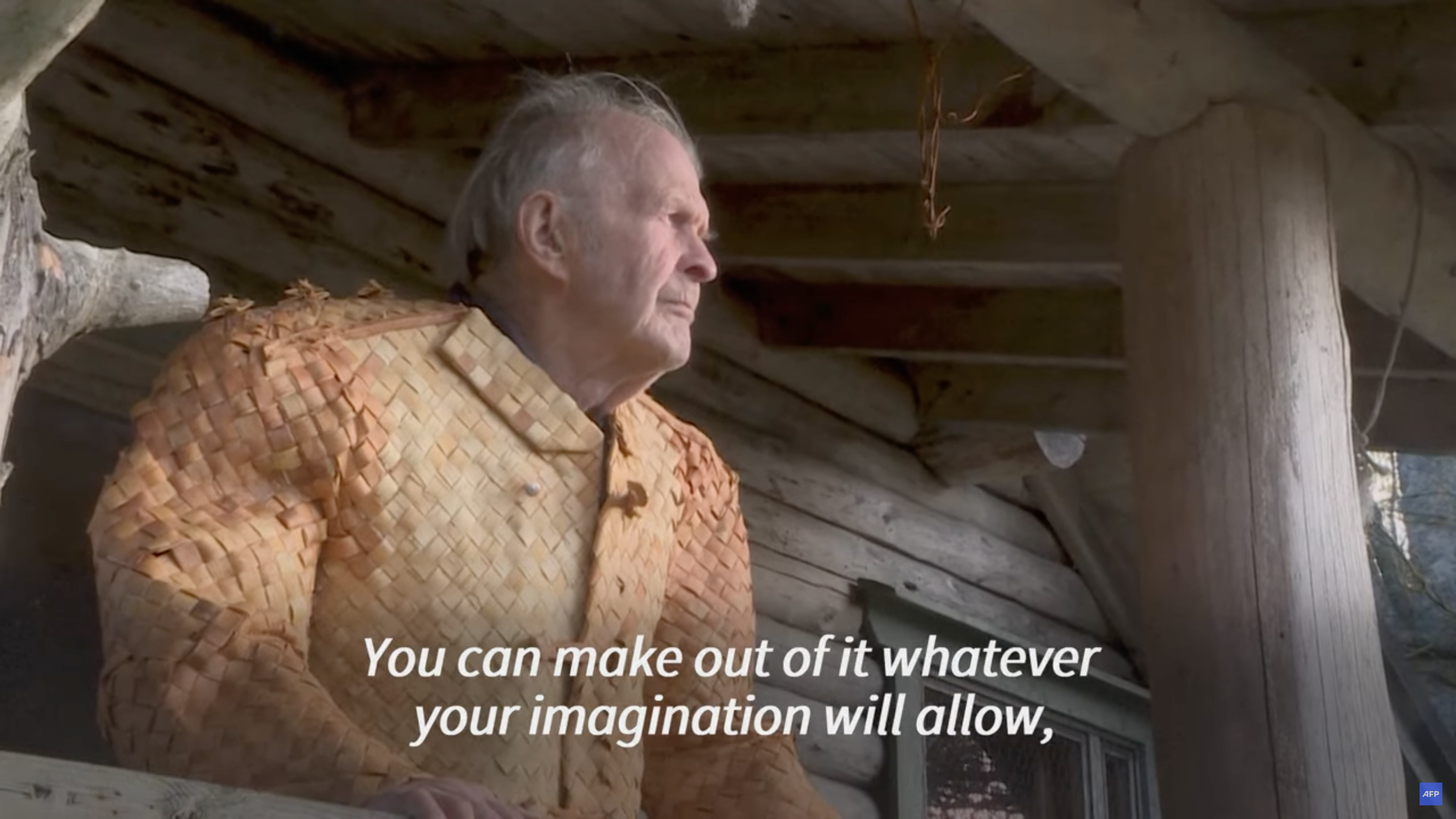
Endless possibilities
Despite the long tradition, it was Erkki Pekkarinen who innovated the craft and brought it into the 21st century. In his art gallery in Asikkala you’ll find a myriad of objects constructed of nothing, but strips of birch bar woven together, without using glue or nails. He states that, with the right technique, birch bark can be used to make “anything you can imagine”.
His most famous creation is a complete costume – including a hat, shoes, and a briefcase – out of birch bark, which became the emblem of the 2001 ITE exhibition at the Meilahti Art Museum in Helsinki. Although it creaks and rustles, it’s also surprisingly flexible.
As the material can be removed from the trunk without killing the tree, it’s an endless flow of biodegradable material. If cleaned and dried properly, it can be stored for at least ten years and afterwards effortlessly cut and flexed.
